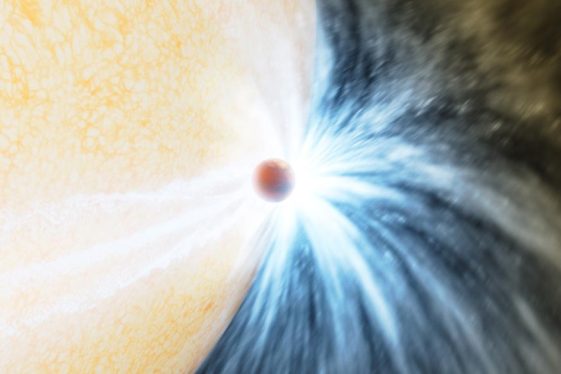Scientists know that a dying star will become a giant that swallows all the planets within a certain radius, but they've never seen it happen… before now, that is. Astronomers at Caltech, Harvard, MIT and other schools have detected a star consuming one of its orbiting planets as it turns into a red giant. A star about 12,000 light-years away, close to the Aquila constellation, became 100 times brighter for over 10 days in an outburst that researchers say represented a hot jovian world falling into its host star's atmosphere and, ultimately, its core.
The group first observed the burst in May 2020, but took roughly a year to determine what happened. Thanks to the NEOWISE infrared telescope, the team ruled out merging stars. The energy from the outburst was only a thousandth of what it should have been for a star-on-star collision, and there was a stream of cold dust rather than hot plasma. MIT's Kishalay De, who led the paper, also notes that Jupiter's mass is about a thousandth that of the Sun, providing a handy reference point.
This phenomenon is believed to be common in the universe, and it's believed that the Earth and other inner Solar System planets will face a similar demise when the Sun dies roughly 5 billion years from now. In that regard, the astronomers confirmed their existing models. Past studies caught stars just before and after they swallowed planets, but never in mid-digestion.
There are still unknowns surrounding planet-munching stars. This finding helps complete the picture, though, and De tellsScienceNews that the next wave of infrared-capable observatories will increase the chances of finding similar events. That, in turn, could illustrate how these apocalyptic processes vary across the cosmos.
This article originally appeared on Engadget at https://www.engadget.com/astronomers-finally-spot-a-star-consuming-a-planet-145950652.html?src=rss
https://www.engadget.com/astronomers-finally-spot-a-star-consuming-a-planet-145950652.html?src=rss


